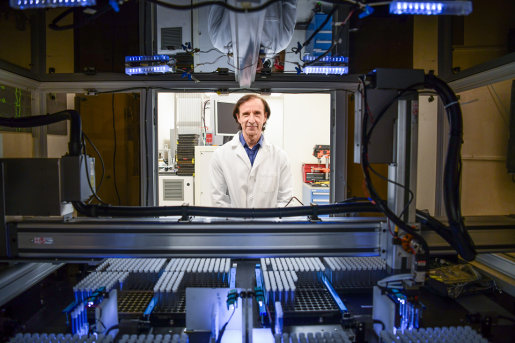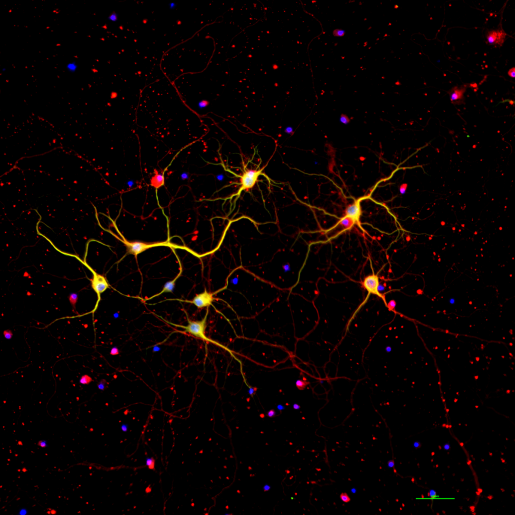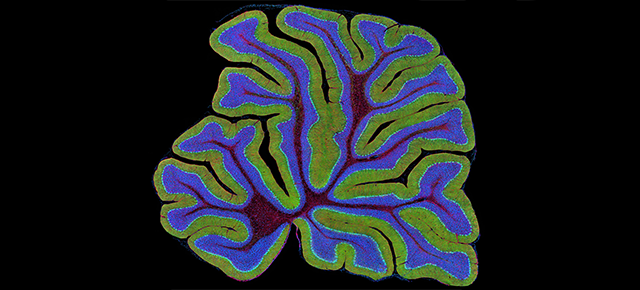Hispanic Heritage Spotlight: Interview with Dr. Juan Botas
From the Labs met with Dr. Juan Botas, professor of molecular and human genetics and molecular and cellular biology at Baylor College of Medicine. He also is a member of the Jan and Dan Neurological Research Institute at Texas Children’s Hospital. Botas shared his challenging beginnings, his passion for neuroscience and how he is bringing science to a general audience.

How did the journey that brought you here today start?
I am from Spain. I grew up in Madrid where I attended college at the Universidad Autónoma. I remember being interested in science, biology in particular, since my middle and high school years. When it was time for me to go to college, however, Spain was going through hard times. It was the late 1970s post-Franco era; there was a lot of turmoil in the streets and class schedules were largely disrupted. After struggling for a couple of years with no classes, I decided that I would spend some time in a research lab to test if dedicating my life to basic biomedical research was for me. I was fortunate because I had an uncle that had come to the U.S. many years before and was already working in a lab. I joined him in Philadelphia. I was about 20 years old.
I spent a summer internship in my uncle’s lab and that really convinced me that I wanted to do research. I went back to Spain and the situation had improved so I was able to finish college. I joined a research lab where I completed my doctoral thesis under the mentorship of Dr. Antonio García-Bellido, a well-known researcher in the field of developmental genetics and a foreign member of the U.S. National Academy of Sciences.
After graduation, I returned to the U.S. and completed a three-year postdoctoral training at Stanford Medical Center. I trained in biochemistry, focusing on a developmental biology project. I wanted to apply what I had learned to biomedicine, so I looked for positions in that field after my postdoc. I found the job I was looking for at Baylor, and I have been here since then, nearly 30 years.
What is the main area of research of your lab?
I work on neurological disorders, mainly neurodegenerative conditions. I felt that was an exciting area to work on because in many ways disorders of the brain remain one of the big challenges in medicine. For most medical disorders we have treatments that have some degree of effectiveness, depending on when they are provided. That applies for metabolic disorders and infectious disorders (yes, we will pass the COVID-19 pandemic eventually). Even with cancer, which was largely untreatable years ago, now there is a higher level of success, at least for some cancers when they are diagnosed early.

That is not the case for disorders of the brain, including Alzheimer’s, Parkinson’s and others, namely rare disorders that are less known because they affect fewer people, but are equally devastating. Neurodegenerative conditions are like a one-way road from which there is no coming back. There are treatments that palliate the symptoms for some time, but they do not slow down progression of the degeneration that occurs in the brain. I thought that was a good field to dive in to, where I could apply the tools I learned and my background from genetics, biochemistry and developmental biology.
My lab studies Alzheimer’s and Parkinson’s disease, but also rare conditions such as Huntington’s disease and others.
I study several neurodegenerative diseases, rare and common, because I am interested in identifying potentially common links among them.”
I think that the findings on one specific area of Alzheimer’s, for instance, could help understand other neurodegenerative conditions. Conducting comparative analyses of the mechanisms that modulate them might help find common strategies for treatment.
I am also interested in understanding the relationship between neurodegenerative disorders and aging, which is the No. 1 risk factor for neurodegenerative diseases. What is happening in those brains that are spared?”
Why do some people of advanced age, some centenarians for example, not suffer from neurodegenerative disorders? We have projects going on exploring new insights into those questions.
What can institutions and scientists do to foster interest in scientific careers among Hispanics?
I think that it is critically important that scientists and institutions reach out to the general public and particularly to young people in middle school. Reaching Hispanics, who are not well represented in the scientific community at the level of graduate school or faculty, may encourage them to pursue a scientific career.
One possibility that I have discussed with my students and colleagues is to talk to students in middle school about research. Scientists also could help popularize science by writing books.
This summer I wrote a book in Spanish about something that has nothing to do with neuroscience, but is science focused. “VIRUS. THE BILLION YEARS WAR. WHY HUMANS ARE EASY PREY OF PANDEMICS,” was published by the Spanish editorial Espasa. VIRUS is meant for the general public and in particular, for teachers and students. The book focuses on COVID-19, but it also is about basic virus biology and other pandemics that have affected humanity before, and what we can learn from them. VIRUS also aims to communicate the importance of the scientific method to achieve valid scientific evidence and how rigorous science can help humanity overcome this and future pandemics.
Read some of the work by the Botas lab that has appeared in From the Labs:
Sorting out what drives Huntington’s disease
A new approach to potentially treat Huntington’s disease
A pill to prevent Alzheimer’s disease might some day be a reality




